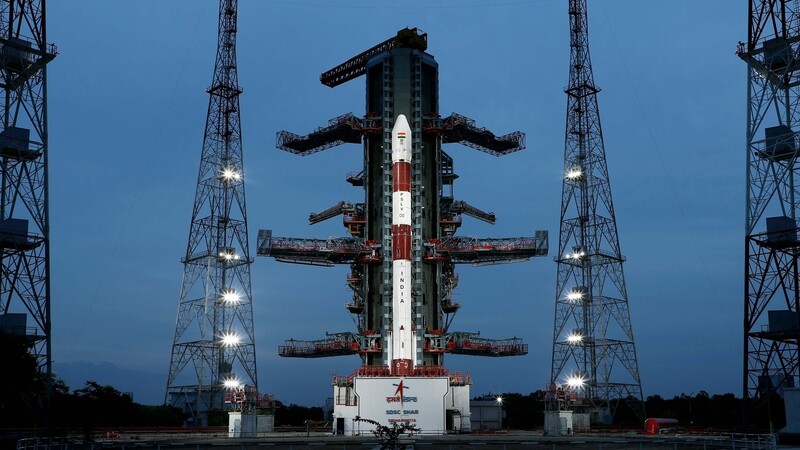The 143-year-old history of the Morbi Bridge in Gujarat collapsed (GS Paper 1, History)

Why in news?
- Recently, the Morbi bridge (also known as Julto Pul) crowded with women and several children, snapped, plunging tourists into the water below.
- Incidentally, the bridge had just reopened to the public on 26 October, Gujarati New Year Day, after nearly six months of renovation.
‘Historic’ hanging bridge:
- The 230-metre long suspension bridge is situated on Machchhu river in Gujarat’s Morbi city.
- It is said that the bridge, built on same the lines of the Ram and Lakshman Jhulas on the Ganga in Uttarakhand, was constructed by Morbi’s former ruler Sir Waghji Thakor 143 years ago.
- He was inspired by colonial influence and decided to construct the bridge, as an “artistic and technological marvel” of that period, to connect Darbargadh Palace with Nazarbag Palace (the residences of the then royalty).
Inauguration:
- The hanging bridge was first inaugurated on 20 February 1879, by then-Mumbai governor Richard Temple. All the material came from England and cost Rs 3.5 lakh at that time to construct the bridge.
- The bridge had suffered severe damage in the 2001 earthquake.
- The famous suspension bridge had shut down for six months for renovations.
Centre restricts use of common weedicide glyphosate citing health hazards
(GS Paper 3, Science and Tech)
Why in news?
- Recently, the Union Ministry of Agriculture and Farmers Welfare restricted the use of glyphosate, a widely used herbicide, citing health hazards for humans and animals.
- Only authorised Pest Control Operators are allowed to use it.
Background:
- Earlier, state governments of Maharashtra, Telangana, Punjab and Andhra Pradesh have tried similar steps but failed.
- The notification was based on a 2019 report by the Government of Kerala on prohibiting the distribution, sale and use of glyphosate and its derivatives.
- Some 35 countries have banned or restricted the use of glyphosate. These include Sri Lanka, Netherlands, France, Colombia, Canada, Israel and Argentina.

Health impacts:
- Health impacts of glyphosate range from cancer, reproductive and developmental toxicity to neurotoxicity and immunotoxicity.
- Symptoms include irritation, swelling, burning of the skin, oral and nasal discomfort, unpleasant taste and blurred vision.
Approved in plantation crops:
- In India, glyphosate has been approved for use only in tea plantations and non-plantation areas accompanying the tea crop. Use of the substance anywhere else is illegal.
- However, a 2020 study by PAN India on the state of glyphosate use in the country had worrying findings. Field studies were conducted in Andhra Pradesh, Himachal Pradesh, Jharkhand, Karnataka, Tamilnadu, Telangana and West Bengal.
Rampant use in India:
- Glyphosate was being used in more than 20 crop fields, it was found. Majority of those using the weedicide were not trained for doing so and did not have the appropriate safety precautions.
- The rampant use of glyphosate in non-designated areas has severe consequences.
- Use of all weedicides including glyphosate is destroying uncultivated food resources and thereby destroying indigenous nutrition habits as well, making rural people and agricultural communities deprived of adequate nutrition, in addition to polluting ecosystems.
Concerns & Way Forward:
- The government’s current move, to restrict the use of glyphosate, may not necessarily work as the presence of pest control operators is “almost non-existent” on the ground.
- The new notification mandates that existing registration certification be put through a further process. Failure to do so will result in appropriate action being taken under the Insecticides Act of 1968.
- Allowing continued use of glyphosate in India will contribute to widespread use of illegal herbicide tolerant crops. This will endanger the agroecological nature of Indian farms, apart from spreading the toxic effects to people, animals and the environment.
ISRO to develop reusable rocket for heavier payloads by 2035
(GS Paper 3, Science and Tech)
Why in news?
- As India eyes setting up its own space station by 2035, the Indian Space Research Organisation (ISRO) has proposed to the industry to collaborate with it in developing a reusable rocket capable of carrying heavier payloads into orbit.
- Dubbed as the Next-Generation Launch Vehicle (NGLV), ISRO was working on the design of the rocket and would like the industry to collaborate with it in the development.

Key Highlights:
- The rocket is planned to carry a 10 tonne payload in the Geostationary Transfer Orbit (GTO) or 20 tonnes to the low earth orbit.
- The new rocket would be helpful as India plans to have its own space station by 2035 and was also eyeing deep space missions, human space flights, cargo missions and putting multiple communication satellites into orbit at the same time.
- The NGLV could be a three-stage rocket powered by green fuel combinations such as methane and liquid oxygen or kerosene and liquid oxygen.
- The NGLV could offer launch costs of USD 1900 per kg of payload in the reusable form and USD 3,000 per kg in the expendable format.
India's space economy:
- India's space economy was pegged at USD 9.6 billion in 2020 and is expected to touch USD 12.8 billion by 2025, according to the ISpA-E&Y report titled 'Developing the Space Ecosystem in India: Focusing on Inclusive Growth'.
- In dollar terms, the satellite services and applications segment would be the largest with a turnover of USD 4.6 billion by 2025, followed by ground segment at USD 4 billion, satellite manufacturing at USD 3.2 billion and launch services at USD 1 billion.
- India's share in the launch services segment was pegged at USD 600 million in 2020 and is projected to grow at a compound annual growth rate of 13 per cent to reach USD 1 billion by 2025.
Way Forward:
- The Polar Satellite Launch Vehicle (PSLV), ISRO's warhorse rocket, was based on the technology developed in the 1980's and cannot be used to launch rockets in the future.
- The NGLV is envisioned as a simple, robust machine designed for bulk manufacturing that will make space transportation more cost effective.
- ISRO plans to have the design of the NGLV ready within a year and offer it to the industry for production, with the first launch tentatively scheduled for 2030.
MoU between FIFA and AIFF for implementing Football4Schools initiative in India
(Miscellaneous)
Why in news?
- Recently, the Ministry of Education signed an MoU with FIFA and All India Football Federation for the ‘Football4Schools’ initiative in India.

Collaboration:
- FIFA, All India Football Federation and Ministry of Education, GoI through this MoU on the sidelines of U-17 WWC are collaborating together to promote football and also equip the young learners with valuable life skills.
Benefits of Football for Schools Programme:
- Empower learners (boys and girls) with valuable life skills and competencies.
- Empower and provide coach-educators with the training to deliver sport and life-skills activities.
- Build the capacity of stakeholders (Schools, Member Associations and public authorities) to deliver training in life skills through football.
- Strengthen the cooperation between governments and participating schools to enable partnerships, alliances and intersectoral collaboration.
Way Forward:
- The football is an immensely popular sport and the Football4Schools program uses it as a positive tool to inspire children and ensure their holistic development.
- ‘Football4Schools’ aims to empower 25 million young boys and girls in India through sports-integrated learning.





